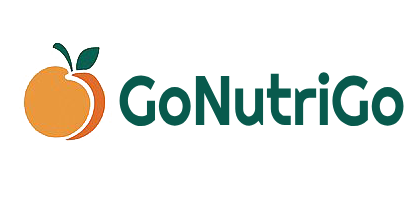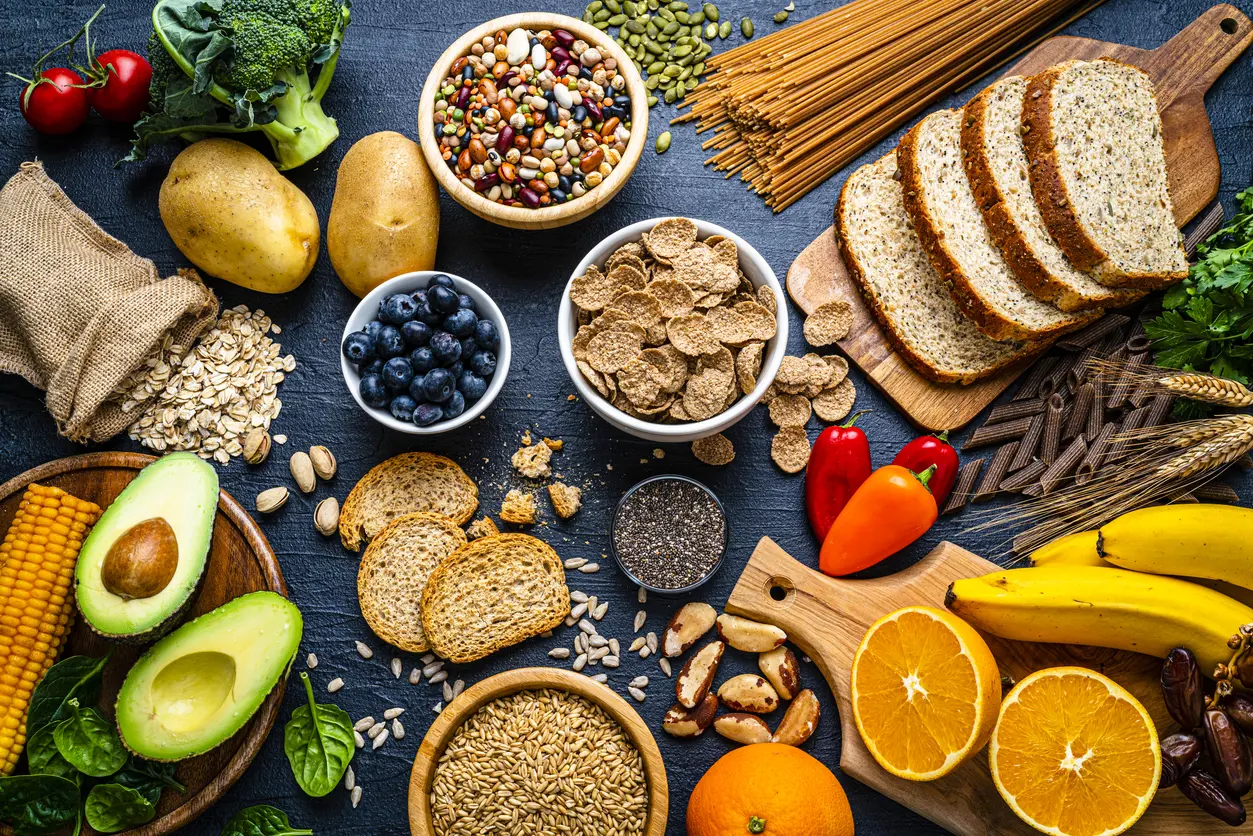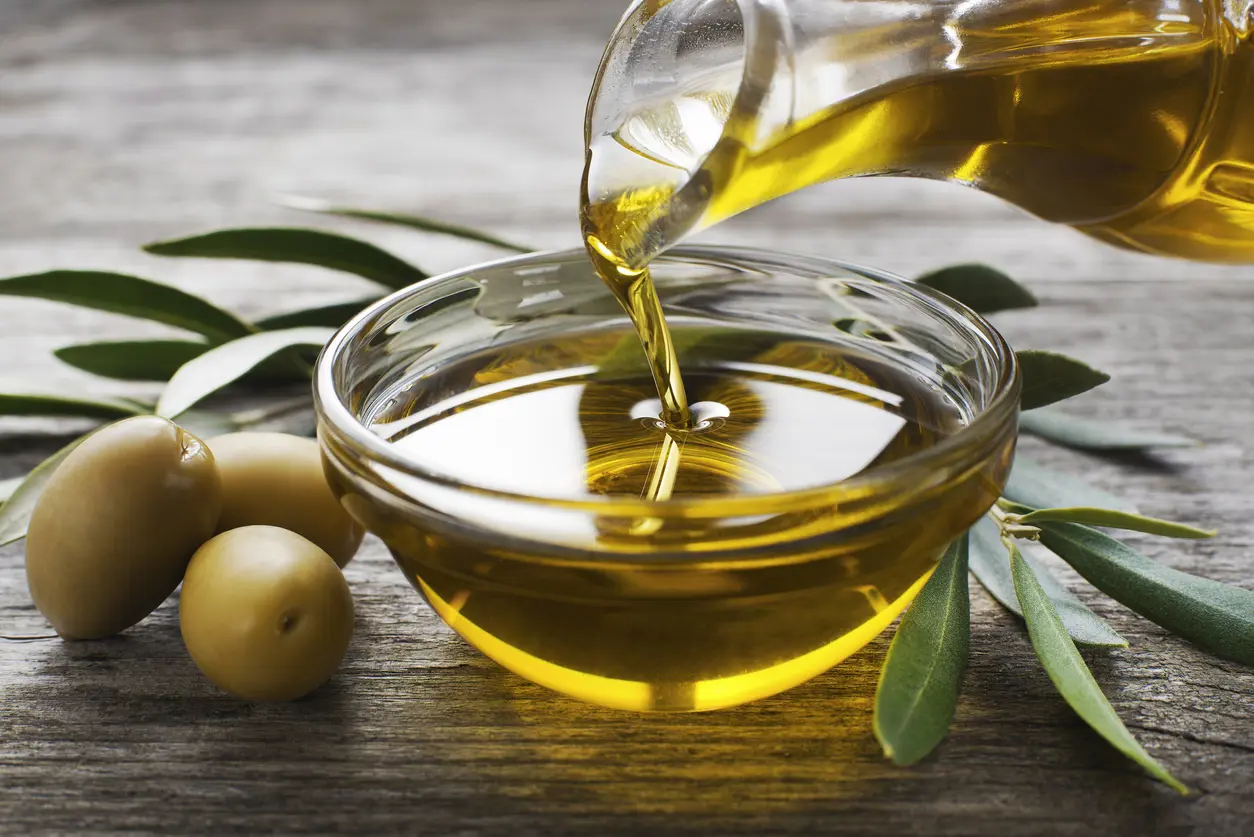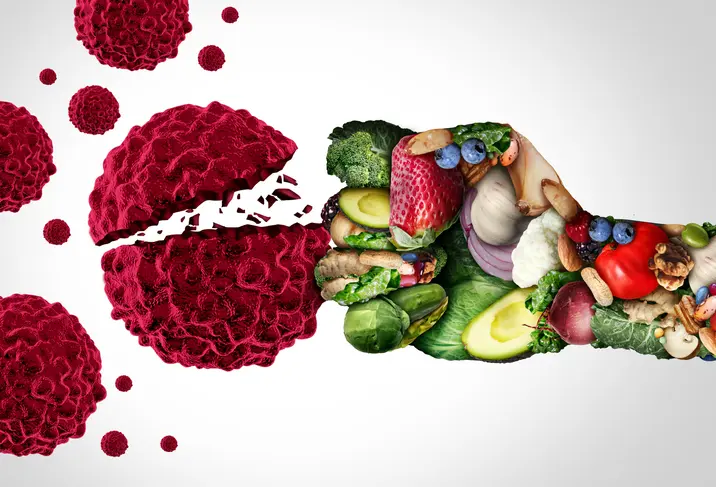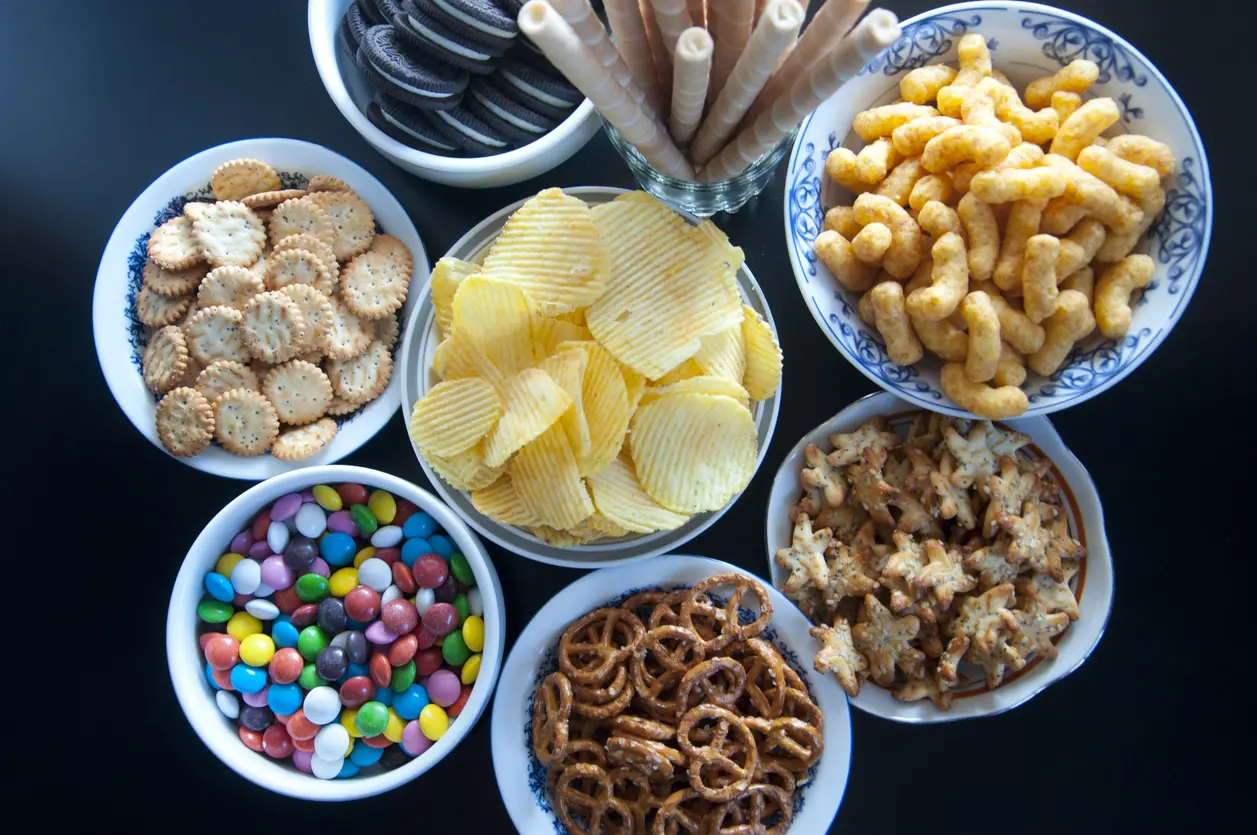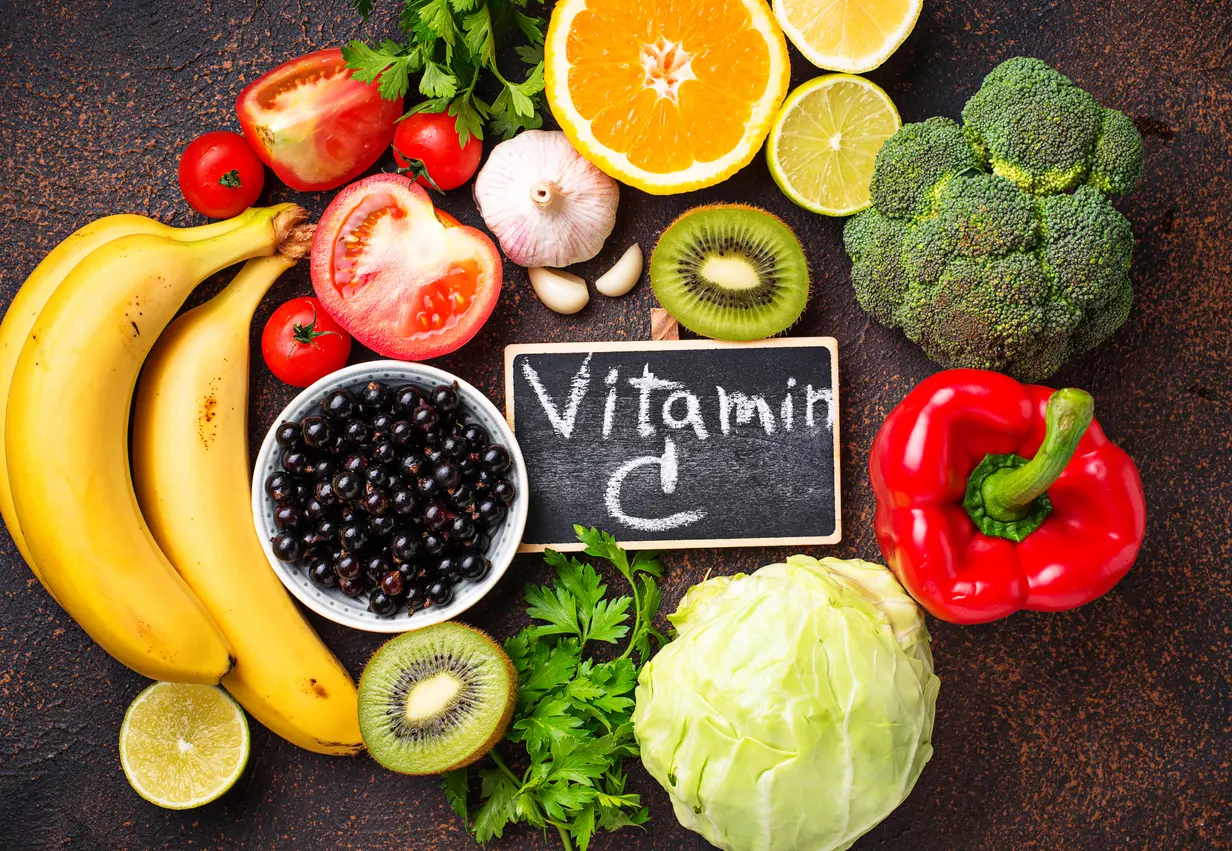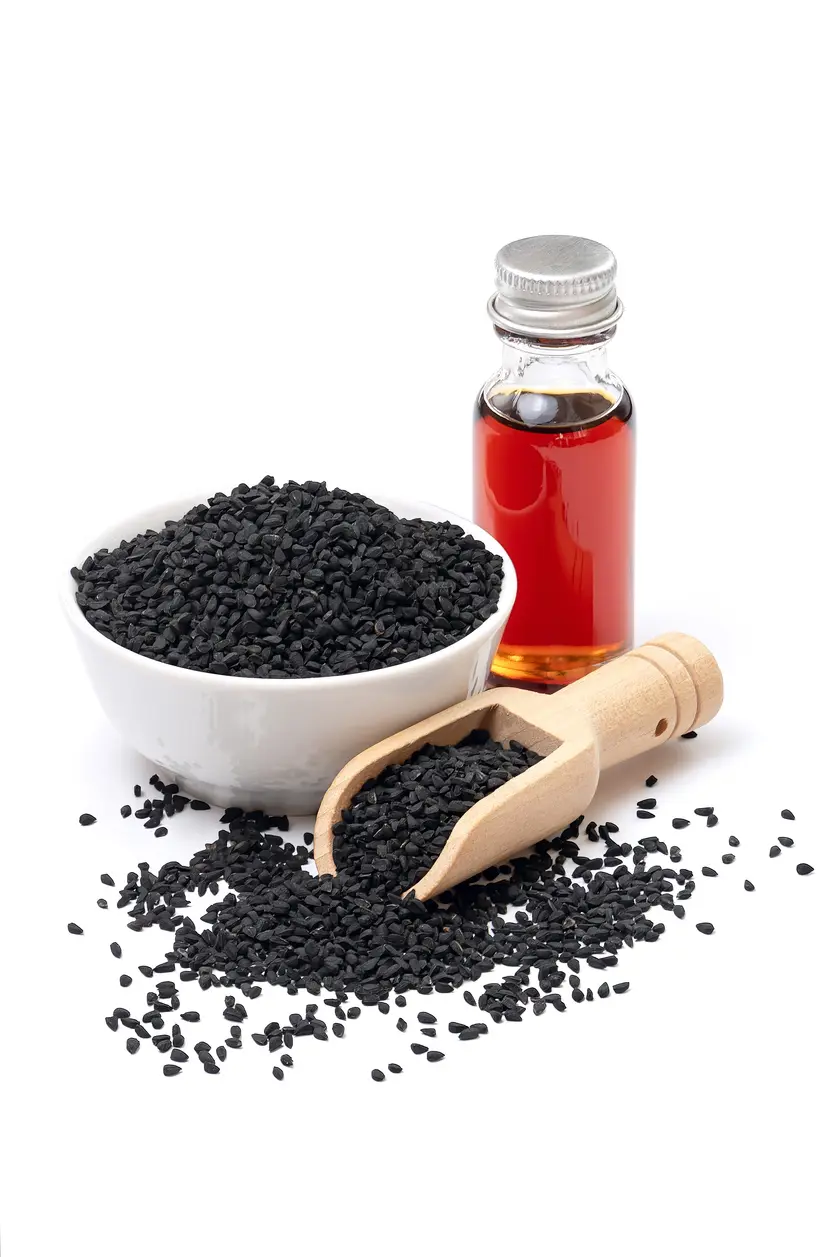Low Residue Diet: What It Is, Foods To Eat And Avoid
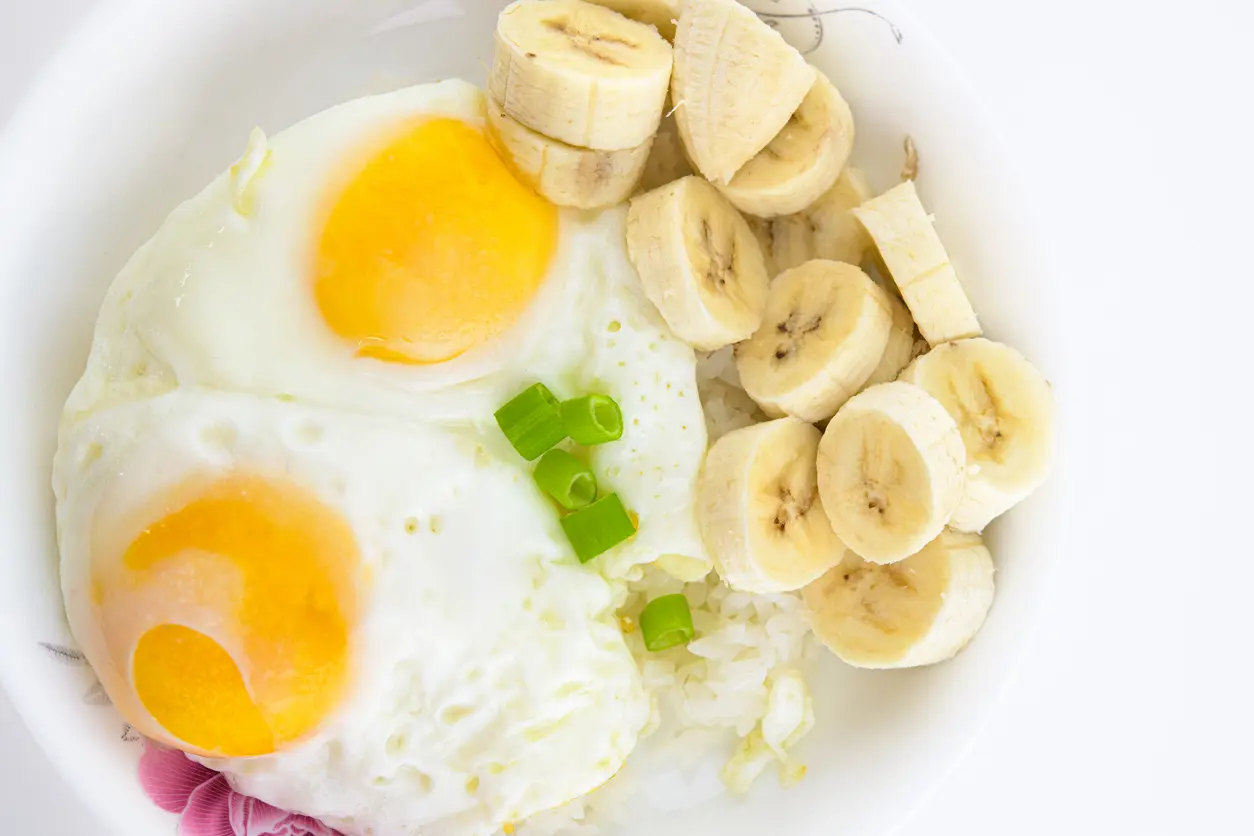
You may have seen the ad campaign, “40 is the new 50”, which refers to the latest colonoscopy guidelines advising us to get this important test earlier rather than later. Your healthcare provider likely suggested a low-residue diet [1] Ahumada C, Pereyra L, Galvarini M, Mella J, Gómez E, Pedreira SC, Cimmino DG. Efficacy and tolerability of a low-residue diet for bowel preparation: systematic review and meta-analysis. Surg Endosc. 2022 Jun;36(6):3858-3875. doi: 10.1007/s00464-021-08703-8. Epub 2021 Sep 1. PMID: 34471982. 2022 before the scope. A low-residue diet may be necessary for other conditions, too.
A low-residue diet is a temporary diet pattern that limits “residue” left in your large bowel (AKA colon) to reduce the frequency and volume of stools. This diet isn’t the same as a low fiber diet and may restrict additional foods or beverages.
Because the diet limits several foods, it should be followed short-term and under medical supervision to prevent nutrient deficiencies. This article will help you understand the purpose of the diet and provide 20 foods to safely enjoy while following a low-residue diet.
What is a Low Residue Diet?
A low-residue diet is similar to a low fiber diet, but not quite the same. Residue comes from undigested food, which provides bulk in your stool. The more bulk you have, the more frequent your bowel movements. A low-residue diet aims to reduce the load and frequency of stool output.
A low-residue diet may be advised before a colonoscopy or for medical conditions [2] Charlebois A, Rosenfeld G, Bressler B. The Impact of Dietary Interventions on the Symptoms of Inflammatory Bowel Disease: A Systematic Review. Crit Rev Food Sci Nutr. 2016 Jun 10;56(8):1370-8. doi: 10.1080/10408398.2012.760515. PMID: 25569442. 2016to relieve gastrointestinal pain from Crohn’s, Irritable Bowel Syndrome (IBS), diverticulitis, or recovery from bowel surgery. This eating plan may help reduce bloating, diarrhea, gas, or cramping.
In addition, a low-residue diet may also be beneficial before other medical procedures. [3] Ros C, Rius M, Abrao MS, deGuirior C, Martínez-Zamora MÁ, Gracia M, Carmona F. Bowel preparation prior to transvaginal ultrasound improves detection of rectosigmoid deep infiltrating endometriosis and is well tolerated: prospective study of women with suspected endometriosis without surgical criteria. Ultrasound Obstet Gynecol. 2021 Feb;57(2):335-341. doi: 10.1002/uog.22058. PMID: 32349172. 2021 A 2021 study found that bowel prep, including a low-residue diet for 3 days, improved the detection of polyps in women undergoing transvaginal ultrasound.
Women undergoing gynecologic surgery [4] Palaia I, Di Donato V, Caruso G, Vestri A, Scudo M, Alunni Fegatelli D, Galli V, Cavalli A, Perniola G, Benedetti Panici P, Muzii L. Preoperative low-residue diet in gynecological surgery. Eur J Obstet Gynecol Reprod Biol. 2022 Apr;271:172-176. doi: 10.1016/j.ejogrb.2022.02.018. Epub 2022 Feb 21. PMID: 35219167. 2022 may also benefit from a low-residue diet. One study found that it reduced the operation time and improved the quality of the surgical field.
How is Low-Residue different from a Generic Low-Fiber Diet?
While a low-residue diet does limit foods high in fiber, it’s stricter than a low-fiber diet. Since fiber isn’t digested, it gets moved through your gastrointestinal system and is eventually expelled from your colon (large bowel) as stool.
A low-residue diet may also limit fried foods, nuts and seeds, higher fat cuts of meat that are difficult to digest, ultra-processed foods high in fat and sugar, and caffeine from coffee, tea, or other beverages and foods. These foods are more likely to either provide too much bulk, or irritate the large bowel.
Will you miss your morning coffee and whole grain toast forever? No! Thankfully, a low-residue diet isn’t meant to be followed long-term. A low-residue diet is used to prep for a colonoscopy, [5] Wang F, Huang X, Wang Z, Yan Z, Wang S, Pan P, Li Z, Bai Y. One-day versus three-day low-residue diet bowel preparation regimens before colonoscopy: a meta-analysis of randomized controlled trials. J Gastroenterol Hepatol. 2024 May;39(5):787-795. doi: 10.1111/jgh.16466. Epub 2024 Jan 22. PMID: 38251810. 2024 or to prevent and relieve pain from various medical conditions or surgery.
According to Lauren O’Connor, MS, RDN, owner of NutriSavvyHealth and author of Healthy Cooking for One, “A temporary low-residue diet may be helpful for individuals with acute symptoms of Crohn’s disease, ulcerative colitis, or irritable bowel syndrome (IBS), as it reduces the amount of undigested food— “residue”—in the digestive tract.”
Benefits of a Low-Residue Diet
Reduces stool volume and frequency
There are several benefits to a low-residue diet. Since it’s lower in fiber, it will reduce the amount of stool produced in your large bowel and lower your daily bowel movements. The goal is to minimize the workload on your gastrointestinal system. Put simply, more residue equals more poop!
Minimizes irritation or strain on digestive tract
A low-residue diet also helps alleviate the irritation and strain on your digestive tract. The more residue in your diet from fiber or the remnants of other foods and beverages, the more irritated your digestive system may be. Residues from food ferment in the bowel and produce bacteria. Bacteria increase the production of gas, leading to bloating and discomfort.
Red meat has been found to alter the gut microbiome and increase inflammation [6] van Soest APM, Hermes GDA, Berendsen AAM, van de Rest O, Zoetendal EG, Fuentes S, Santoro A, Franceschi C, de Groot LCPGM, de Vos WM. Associations between Pro- and Anti-Inflammatory Gastro-Intestinal Microbiota, Diet, and Cognitive Functioning in Dutch Healthy Older Adults: The NU-AGE Study. Nutrients. 2020 Nov 12;12(11):3471. doi: 10.3390/nu12113471. PMID: 33198235; PMCID: PMC7697493. 2020 in the gut, while plant-based proteins (like tofu) have anti-inflammatory effects.
Useful in flare-ups of inflammatory bowel conditions
Individuals with flare-ups of inflammatory bowel conditions such as IBS, Crohn’s disease, or inflammatory bowel disease may see benefits with a low-residue diet. A low-residue diet often excludes foods high in FODMAPS [7] Robin Spiller Impact of Diet on Symptoms of the Irritable Bowel Syndrome 2021 fermentable oligosaccharides, disaccharides, monosaccharides, and polyols). These carbohydrates get fermented, creating bacteria in the bowel, which can increase gas production, causing bloating and discomfort.
Some foods that should be avoided on a low-residue diet during a flare-up are high in FODMAPS and include beans, cabbage-family vegetables, and certain fruits and grains.
Supports pre-surgery and recovery post-surgery or during intestinal rest
If you’ve ever had abdominal surgery, you may remember that you’re not allowed to eat much until your bowels resume functioning. Post surgery, bowel rest is initially needed until a person passes gas, a sign that bowel function is returning.
Most people start with clear liquid diets of clear juice, gelatin, and broth, and advance as tolerated to more solid food. A low-residue diet may be initiated for a few days to ease back into solid foods post-op. Hold the fried chicken and French fries for now!
20+ Foods You Can Eat on a Low Residue Diet
Grains & Carbohydrates
1. White rice
White rice is a good source of carbohydrate and is easy to digest. Below are some tips for using it:
2. Plain pasta
Pasta is also a complex carbohydrate that provides energy for a low-residue diet.
3. White bread
White bread is the perfect addition to a low-residue diet as it’s easy to digest for most people.
4. Saltine crackers
Choose crackers without seeds.
5. Low-fiber cereals (e.g., cornflakes)
Choose refined cereals such as cornflakes, crisped rice, or cream of wheat.
Proteins
Protein sources should be low in fat and easy to digest. Avoid chunky nut butters and fried foods.
6. Eggs
Eggs are an affordable, convenient, complete protein.
7. Lean ground chicken or turkey
Ground poultry is a lower-fat substitute for ground beef.
8. White fish
White fish is versatile, low in fat, and delicious.
9. Tofu (soft or silken)
Tofu is a great source of protein for vegan or vegetarian diets.
10. Smooth peanut butter (no chunky bits)
Peanut butter can be used in meals and snacks.
Dairy & Alternatives
Include dairy products for adequate calcium, protein, and B vitamins in your diet. Lactose-free or plant-based dairy products may be used if needed.
11. Milk (if tolerated)
12. Choose low-fat or fat-free yogurt without fruit
13. Cheese (soft cheeses like cream cheese, cottage cheese)
Vegetables & Fruits
Root vegetables like potatoes, carrots, and beets are better tolerated than cabbage family vegetables like broccoli or kale.
14. Peeled and cooked carrots
15. Peeled and cooked zucchini
16. Bananas (ripe)
17. Applesauce (made or purchased, without skins)
18. Canned peaches or pears (without skins)
Snacks & Miscellaneous
19. Clear liquids like juice or gelatin may be included on a low-residue diet. Low-fat cookies such as ginger snaps or graham crackers are also a good option.
20. Plain gelatin (do not add fruit)
21. Beef, chicken, or vegetable broth
22. Plain cookies (e.g., ginger snaps, vanilla wafers), Avoid cookies with nuts or seeds.
23. Pretzels
Foods to Avoid on a Low Residue Diet
Higher fiber foods should be avoided on a low-residue diet as they add more bulk to your stool.
- Whole grains (eg. Whole wheat bread, rye bread with seeds)
- Nuts and seeds (including caraway, chia, flaxseed, and sesame seeds)
- Raw vegetables (cucumbers, broccoli, kale, lettuce, tomatoes)
- Legumes (beans, lentils, and peas)
- Fruits with skin or pulp (citrus fruit, fresh peaches, pears, nectarines, pineapple)
- Popcorn
- Tough meats (fatty beef, lamb, or pork)
- High-fat processed foods (bacon, hot dogs, sausage, chips, high-fat pastries, etc.)
- Caffeinated drinks (if irritating): coffee, tea, energy drinks
Low-residue vs. low fiber diet: What’s the difference?
- Low residue restricts indigestible material more strictly
While food choices on a low-residue diet and a low-fiber diet are similar, a low-residue diet is more restrictive. This diet limits indigestible material in food, including husks of corn, beans, and peas.
High-fat foods are often described as “sticking to your ribs” because they’re harder to digest. Fast food, fried food, greasy meat, and ice cream should be avoided while following a low-residue diet. Tough, stringy meat like steak or fatty cuts of pork are off limits.
Lactose from milk, ice cream, and yogurt may be bothersome to individuals with lactose intolerance. In these cases, dairy products should be avoided, or lactose-free foods and beverages may be substituted.
Tips for Following a Low-Residue Diet
- Eat small, frequent meals. This reduces the burden on your gastrointestinal system to digest more food than it can handle.
- Drink plenty of water. Water aids in digestion and laxation, making it easier to pass stool.
- Track bowel symptoms. Keep a food diary and jot down symptoms after meals. This will help identify foods that aggravate your condition.
- Avoid alcohol and spicy foods. Alcohol is a known gastrointestinal irritant. It adds zero nutritional value to your diet and is linked with several chronic diseases, including cancer [8] Brown RB, Bigelow P, Dubin JA, Neiterman E. Breast cancer, alcohol, and phosphate toxicity. J Appl Toxicol. 2024 Jan;44(1):17-27. doi: 10.1002/jat.4504. Epub 2023 Jun 18. PMID: 37332052. 2024, cardiac arrhythmias [9] Hatley M, Lam T, Ekeruo I, Taegtmeyer H. Alcohol and Atrial Fibrillation: An Update and New Perspectives. Am J Med. 2024 Nov;137(11):1042-1048. doi: 10.1016/j.amjmed.2024.06.038. Epub 2024 Jul 4. PMID: 38971529. 2024, and liver disease.
- Choose cooking methods like boiling, steaming, or baking. Avoid frying foods and stick with lower-fat cooking techniques.
How Long Should You Follow a Low-Residue Diet?
Only follow under medical supervision
A low-residue diet should be prescribed by a medical provider, not your friends, family, or social media influencers. Because it’s restrictive, it shouldn’t be followed without medical monitoring.
Typically short-term
For procedural or surgical preparation, a low-residue diet is usually only necessary for a few days. It may also be used post-operatively for a few days until bowel function is fully restored.
For medical conditions like Crohn’s, IBS, and IBD, the diet may be prescribed for a few weeks, then advanced as tolerated.
Risks of long-term use
A low-residue diet isn’t intended for long-term use because it may lead to nutrient deficiencies or constipation [10] Ioniță-Mîndrican CB, Ziani K, Mititelu M, Oprea E, Neacșu SM, Moroșan E, Dumitrescu DE, Roșca AC, Drăgănescu D, Negrei C. Therapeutic Benefits and Dietary Restrictions of Fiber Intake: A State of the Art Review. Nutrients. 2022 Jun 26;14(13):2641. doi: 10.3390/nu14132641. PMID: 35807822; PMCID: PMC9268622. 2022. In addition, as the diet is low in fiber, you may lose the protective effects of a high-fiber diet, including diabetes management, cholesterol reduction, and weight control.
When to Transition Off the Diet
Work with your doctor or dietitian
Once your colonoscopy is done, you can resume your regular diet unless otherwise advised by your healthcare provider. For other conditions, work with your doctor or dietitian [11] Fernández-Bañares F. Carbohydrate Maldigestion and Intolerance. Nutrients. 2022 May 4;14(9):1923. doi: 10.3390/nu14091923. PMID: 35565890; PMCID: PMC9099680. 2022 to transition back to regular food. A dietitian can provide meal ideas to get your diet back on track.
Slowly reintroduce high-fiber foods
After following a low-residue diet, you may add high-fiber foods gradually back to your diet. You can make the switch slowly by first using whole-grain bread for a few days, then adding back a few servings of your favorite fruits and vegetables every few days.
Beans and gassy vegetables may be eaten in small amounts. Vegetables like broccoli and kale are better tolerated cooked than raw.
Monitor your body’s response
Keep an eye on how you’re feeling once you’ve added high-fiber foods back into your diet. Look for signs of discomfort such as abdominal pain, bloating, cramps, diarrhea, nausea, or vomiting. Constipation may also occur if a low-residue diet is followed for too long.
Final Thoughts: Low Residue Diet is a Tool, Not a Lifestyle
The purpose of a low-residue diet
A low-residue diet is a diet plan that’s used in preparation for a colonoscopy or gynecological surgery. It focuses on restricting foods and beverages that have indigestible material to reduce the amount of stool produced and the frequency of bowel movements.
A low-residue diet is temporary
A low-residue diet is meant to be temporary and only used for a few days or up to a few weeks. Long-term use is not advised as it may lead to nutritional deficiencies and medical conditions related to low-fiber diets, such as diverticulitis [12] Carabotti M, Falangone F, Cuomo R, Annibale B. Role of Dietary Habits in the Prevention of Diverticular Disease Complications: A Systematic Review. Nutrients. 2021 Apr 14;13(4):1288. doi: 10.3390/nu13041288. PMID: 33919755; PMCID: PMC8070710. 2021.
Seek professional advice
If a low-residue diet is prescribed before or after a procedure, ask your healthcare provider how long it needs to be followed and when you can resume your regular food intake.
A Registered Dietitian can help you navigate healthy food choices while you’re adhering to a low-residue diet. Dietitians are the health expert to trust when managing changes in your dietary habits.
Balanced nutrition is key in the long term
After transitioning from a low-residue diet, include all food groups (fruit, vegetables, grains, protein, dairy, and healthy fats) for best long-term health and disease prevention. A Mediterranean diet [13] Gantenbein KV, Kanaka-Gantenbein C. Mediterranean Diet as an Antioxidant: The Impact on Metabolic Health and Overall Wellbeing. Nutrients. 2021 Jun 6;13(6):1951. doi: 10.3390/nu13061951. PMID: 34204057; PMCID: PMC8227318. 2021 is a great place to start.
This diet [14] Barber TM, Kabisch S, Pfeiffer AFH, Weickert MO. The Effects of the Mediterranean Diet on Health and Gut Microbiota. Nutrients. 2023 Apr 29;15(9):2150. doi: 10.3390/nu15092150. PMID: 37432307; PMCID: PMC10180651. 2023 is nutritious and delicious, and is encouraged to keep your gut bacteria flourishing to reduce the risk of chronic conditions, including cancer, diabetes, heart disease, and obesity.
Was this article helpful?
-
Efficacy and tolerability of a low-residue diet for bowel preparation: systematic review and meta-analysis. Surg Endosc. 2022 Jun;36(6):3858-3875. doi: 10.1007/s00464-021-08703-8. Epub 2021 Sep 1. PMID: 34471982.; Ahumada C, Pereyra L, Galvarini M, Mella J, Gómez E, Pedreira SC, Cimmino DG. ; ( 2022 )
https://pubmed.ncbi.nlm.nih.gov/34471982/ -
The Impact of Dietary Interventions on the Symptoms of Inflammatory Bowel Disease: A Systematic Review. Crit Rev Food Sci Nutr. 2016 Jun 10;56(8):1370-8. doi: 10.1080/10408398.2012.760515. PMID: 25569442.; Charlebois A, Rosenfeld G, Bressler B.; ( 2016 )
https://pubmed.ncbi.nlm.nih.gov/25569442/ -
Bowel preparation prior to transvaginal ultrasound improves detection of rectosigmoid deep infiltrating endometriosis and is well tolerated: prospective study of women with suspected endometriosis without surgical criteria. Ultrasound Obstet Gynecol. 2021 Feb;57(2):335-341. doi: 10.1002/uog.22058. PMID: 32349172.; Ros C, Rius M, Abrao MS, deGuirior C, Martínez-Zamora MÁ, Gracia M, Carmona F. ; ( 2021 )
https://pubmed.ncbi.nlm.nih.gov/32349172/ -
Preoperative low-residue diet in gynecological surgery. Eur J Obstet Gynecol Reprod Biol. 2022 Apr;271:172-176. doi: 10.1016/j.ejogrb.2022.02.018. Epub 2022 Feb 21. PMID: 35219167.; Palaia I, Di Donato V, Caruso G, Vestri A, Scudo M, Alunni Fegatelli D, Galli V, Cavalli A, Perniola G, Benedetti Panici P, Muzii L.; ( 2022 )
https://pubmed.ncbi.nlm.nih.gov/35219167/ -
One-day versus three-day low-residue diet bowel preparation regimens before colonoscopy: a meta-analysis of randomized controlled trials. J Gastroenterol Hepatol. 2024 May;39(5):787-795. doi: 10.1111/jgh.16466. Epub 2024 Jan 22. PMID: 38251810.; Wang F, Huang X, Wang Z, Yan Z, Wang S, Pan P, Li Z, Bai Y. ; ( 2024 )
https://pubmed.ncbi.nlm.nih.gov/38251810/ -
Associations between Pro- and Anti-Inflammatory Gastro-Intestinal Microbiota, Diet, and Cognitive Functioning in Dutch Healthy Older Adults: The NU-AGE Study. Nutrients. 2020 Nov 12;12(11):3471. doi: 10.3390/nu12113471. PMID: 33198235; PMCID: PMC7697493.; van Soest APM, Hermes GDA, Berendsen AAM, van de Rest O, Zoetendal EG, Fuentes S, Santoro A, Franceschi C, de Groot LCPGM, de Vos WM. ; ( 2020 )
https://pubmed.ncbi.nlm.nih.gov/33198235/ -
Impact of Diet on Symptoms of the Irritable Bowel Syndrome; Robin Spiller; ( 2021 )
https://pubmed.ncbi.nlm.nih.gov/33572262/ -
Breast cancer, alcohol, and phosphate toxicity. J Appl Toxicol. 2024 Jan;44(1):17-27. doi: 10.1002/jat.4504. Epub 2023 Jun 18. PMID: 37332052.; Brown RB, Bigelow P, Dubin JA, Neiterman E. ; ( 2024 )
https://pubmed.ncbi.nlm.nih.gov/37332052/ -
Alcohol and Atrial Fibrillation: An Update and New Perspectives. Am J Med. 2024 Nov;137(11):1042-1048. doi: 10.1016/j.amjmed.2024.06.038. Epub 2024 Jul 4. PMID: 38971529.; Hatley M, Lam T, Ekeruo I, Taegtmeyer H. ; ( 2024 )
https://pubmed.ncbi.nlm.nih.gov/38971529/ -
Therapeutic Benefits and Dietary Restrictions of Fiber Intake: A State of the Art Review. Nutrients. 2022 Jun 26;14(13):2641. doi: 10.3390/nu14132641. PMID: 35807822; PMCID: PMC9268622.; Ioniță-Mîndrican CB, Ziani K, Mititelu M, Oprea E, Neacșu SM, Moroșan E, Dumitrescu DE, Roșca AC, Drăgănescu D, Negrei C.; ( 2022 )
https://pubmed.ncbi.nlm.nih.gov/35807822/ -
Carbohydrate Maldigestion and Intolerance. Nutrients. 2022 May 4;14(9):1923. doi: 10.3390/nu14091923. PMID: 35565890; PMCID: PMC9099680.; Fernández-Bañares F. ; ( 2022 )
https://pubmed.ncbi.nlm.nih.gov/35565890/ -
Role of Dietary Habits in the Prevention of Diverticular Disease Complications: A Systematic Review. Nutrients. 2021 Apr 14;13(4):1288. doi: 10.3390/nu13041288. PMID: 33919755; PMCID: PMC8070710.; Carabotti M, Falangone F, Cuomo R, Annibale B. ; ( 2021 )
https://pubmed.ncbi.nlm.nih.gov/33919755/ -
Mediterranean Diet as an Antioxidant: The Impact on Metabolic Health and Overall Wellbeing. Nutrients. 2021 Jun 6;13(6):1951. doi: 10.3390/nu13061951. PMID: 34204057; PMCID: PMC8227318.; Gantenbein KV, Kanaka-Gantenbein C. ; ( 2021 )
https://pubmed.ncbi.nlm.nih.gov/34204057/ -
The Effects of the Mediterranean Diet on Health and Gut Microbiota. Nutrients. 2023 Apr 29;15(9):2150. doi: 10.3390/nu15092150. PMID: 37432307; PMCID: PMC10180651.; Barber TM, Kabisch S, Pfeiffer AFH, Weickert MO. ; ( 2023 )
https://pubmed.ncbi.nlm.nih.gov/37432307/

